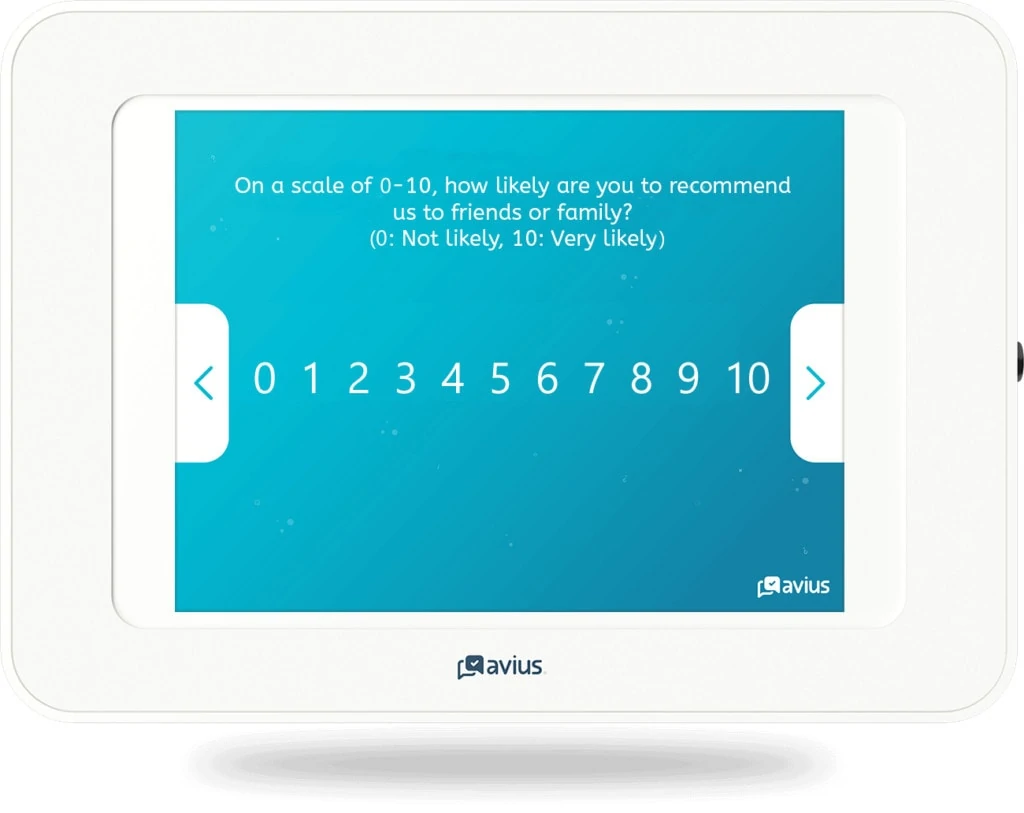Voice of Customer surveys can bring many benefits to companies looking to meet customers’ increasing expectations and deliver exceptional experiences. Your survey design plays a vital role in gathering valuable insights which you can use to improve various areas of your business. So, carefully plan your questionnaire to ensure you obtain valuable feedback.
To help you, here’s our top 8 questions you should be asking in your customer satisfaction survey:
1. How would you rate your overall experience today?
This CSAT question will help you measure the overall satisfaction of your customers. It’s the simplest way to find out if you’re delivering on CX. Measure satisfaction at each touchpoint and regularly compare the score against your previous months and other sites. It’ll help you improve your performance and customers’ perception of your brand.
Bear in mind that in order to get the most value from a CSAT score, you need to understand the reasons why your customers are happy or unhappy. So, always follow up with a free text question (see example 4).
2. How would you rate your experience in terms of value for money?
This is an example of a more specific CSAT question which helps determine whether or not you provide good value for money. If your scores suggest you’re not providing value for money, dig deeper into the results of other questions or add new questions to collect more insights.
3. To what extent do you agree with the following statement: The facilities were clean and well-maintained?
To your customers, the cleanliness of your toilet facilities says a lot about the overall state of your business. Clean and well-maintained bathrooms impact overall customer satisfaction as well as their spending during the rest of their experience. Gathered data will help you manage schedules and predict when each facility needs attention, improving operational efficiency.
4. Was there anything about your visit that could have been better?
By asking your customers what you could have done better, you can easily find out which areas of the business need improving. Give respondents the chance to provide the details of things that didn’t meet their expectations or disappointed them. Such feedback gives much more than scores alone. It’s not only unhappy customers who will answer this question; satisfied and loyal ones might also have suggestions on how you can improve. An open-ended question is probably the most important in any satisfaction survey, as long as you act on the insights received.
5. On a scale of 0-10, how likely are you to recommend us to friends or family?
This is an example of a Net Promoter Score (NPS) survey question. It measures how happy your customers are with their experience and how likely they are to promote your business to others.
The likelihood of recommending your business to friends or family members is an indicator of loyalty. When combined with other questions, it provides reliable data to help you predict the churn rate and find out how you can boost customer loyalty and advocacy. Benchmark the score against your competitors as well as your previous scores to continue improving and innovating.

6. On a scale of 0-10, how likely are you to visit us again?
This question measures the likelihood of repeat visitors. It’s great to ask this question with the one above and compare the data. Customers who are likely to recommend you to their friends and family, and likely to visit again, are considered loyal, and will continue contributing to your business revenue.
7. How did your overall experience compare against your expectations?
People’s expectations have a huge impact on their satisfaction and likeliness to return or recommend your business. Asking an expectation-based question will help you focus on setting customers’ expectations, which is as important as focusing on CX itself.
8. Would you like to be contacted about your feedback?
At the end of the survey, offer to get back to your respondents so they can elaborate on their experience. It’s a chance to respond to any negative comments as well as address and resolve issues that arose. Follow up with everyone who left their contact details. These customers want to help you improve. Ignoring them will only encourage them to go to a competitor.
 TOP TIPS
TOP TIPS
a) Ask respondents how they heard about you to help you measure your marketing efforts and adjust your promotional strategies. Find out if your current communications tactics are working and if you’re using the right channels to promote your brand.
b) How many times have you visited us before? is a great question to help you evaluate the success of your customer retention strategy. Follow up with a question whether they have a membership, or an annual pass if you’re in the attractions sector, to compare the number of members vs new customers.
c) Include demographic profiling questions in your satisfaction survey to help you understand and segment your audience better. Knowing the customer’s age, gender, ethnicity or income, can significantly increase the chances of you succeeding. Demographic characteristics will help you adjust your offerings and ensure you’re targeting the right people.
By Natalia Kaczmarek


